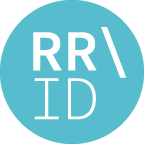Sputum and Tongue Swab Molecular Testing for the In-Home Diagnosis of Tuberculosis in Unselected Household Contacts: A Cost and Cost-Effectiveness Analysis
This article has been Reviewed by the following groups
Discuss this preprint
Start a discussion What are Sciety discussions?Listed in
- Evaluated articles (Rapid Reviews Infectious Diseases)
Abstract
Background
Delayed and missed diagnoses are a persistent barrier to tuberculosis (TB) control, driven by difficulties collecting sputum and an unmet need for decentralized testing. Household contact investigation with point-of-care (POC) testing of noninvasive specimens may offer a cost-effective solution to strengthen active case finding.
Methods
In-home molecular POC testing was conducted using sputum and tongue specimens collected from household contacts of people with confirmed TB residing in South Africa. A health economic assessment was executed to estimate and compare the cost and cost-effectiveness of different in-home POC testing strategies against centralized sputum testing (standard of care) from a provider's perspective. The primary cost-effectiveness outcome was measured as the incremental cost per additional household contact with TB detected and linked to treatment. Decision analytic modeling was used to estimate and compare incremental cost-effectiveness ratios across strategies.
Results
The total implementation cost of delivering the standard of care to 300 households over a 2-year period was $85 188. Strategies that integrated in-home POC testing ranged from $88 672 to $97 271. The cost per test for in-home POC sputum testing was the highest at $20.08. Two strategies, POC sputum testing and POC combined sputum and individual tongue swab testing, were the most cost-effective with incremental cost-effectiveness ratios of $641 and $775, respectively, both below a $2760 willingness-to-pay threshold.
Conclusions
In-home POC molecular TB testing strategies that use combination testing of tongue swabs and sputum specimens can meaningfully improve the number of people tested, diagnosed, and notified during household contact investigation while being cost-effective.
Article activity feed
-
-

Septiara Putri, Mardiati Nadjib
Review 2: "Sputum and Tongue Swab Molecular Testing for the In-Home Diagnosis of Tuberculosis in Unselected Household Contacts: A Cost and Cost-Effectiveness Analysis"
Reviewers recommended clarifying parameter distributions in the probabilistic sensitivity analysis and using purchasing power parity for currency conversion.
-

Peter Auguste
Review 1: "Sputum and Tongue Swab Molecular Testing for the In-Home Diagnosis of Tuberculosis in Unselected Household Contacts: A Cost and Cost-Effectiveness Analysis"
Reviewers recommended clarifying parameter distributions in the probabilistic sensitivity analysis and using purchasing power parity for currency conversion.
-

Strength of evidence
Reviewers: P Auguste (University of Warwick) | 📒📒📒 ◻️◻️
S Putri (Glasgow University) & M Nadjib (Universitas Indonesia) | 📗📗📗📗◻️ -

